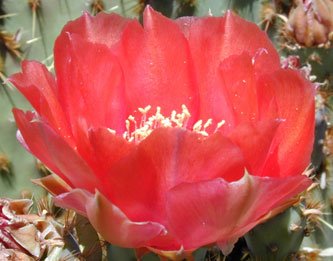
We thought these folks had built in a pretty nice setting along the Missouri, convenient to fishing as well as the mountains.

Our destination was Georgetown Lake, about 25 miles west of the old copper town of Anaconda. Our friends Terry and Cindy Mattson have been spending two or three weeks a year there for the last ten years and we wanted to see what the attraction was. Here's a view of the lake from the road going into the Forest Service campground (translated as absolutely no amenities other than a paved parking pad and pit toilets) where the Mattsons go every year.

Here's the view from the campsite.

Every morning the red-necked grebes would call across the water and we'd watch them feed their young. The big attraction is fishing and most of that is done with flies, meaning that most of the fish get thrown back. The Mattsons were considerate enough to save some trout for our dinner one night and these nice fat Rainbows were mighty delicious.
A few miles west of the lake is the small town of Phillipsburg, which has transformed itself from a dying mining town into a tourist draw. It had one of the most attractively restored downtown areas that we've seen on the trip as you can see from these photos.


Our visit coincided with the Rocky Mountain Accordion Festival and Al wished we had planned ahead to attend some of the events. As it was, he spent some nostalgic time in the local historical museum reliving his youthful accordion enthusiasm with the modern instruments that were on display and discussing them with the sales rep. One highlight of the festival was the parade, which went west on the two blocks of the main street and then turned around and retraced its path in case anyone had missed it. I was able to get the entire parade into a single photo frame. The accordionists were having a lot of fun and so were the appreciative spectators.

The Mattsons kindly drove us in their 4WD vehicle up to the ghost town of Granite, which sits a thousand feet up a steep hill from Phillipsburg. From the "road", you can see traces of the old 9000+-foot long tramway that transported ore down to the smelter in Phillipsburg. Not much is left of the town, but there are interpretive signs that tell you what had been where. This rock vault is all that is left of the bank.

When the mine was in operation, the stamp mills must have been an overwhelming sight, but all that remains today is the extensive rock work. That's the Mattson's dog Boots in the lower right, not a wild animal.

Here's the view down into the valley from the Granite ghost town toward the site of today's Phillipsburg, a thousand feet below. Al gave a lot of thought to the logistics of operating a mill in such a location, wondering how they got building materials, equipment, even food up the steep slopes in the early 1890's. I wondered if the ladies who inhabited the red light district had to walk up the hill themselves or if they were able to get rides on supply wagons.

Georgetown Lake is at an elevation of 6300 feet and so there were still wildflowers blooming at the end of July. Here are a couple of examples.




1 Comments:
At 8:16 PM, Jane and John Weichert said…
Jane and John Weichert said…
Beautiful
Post a Comment
<< Home